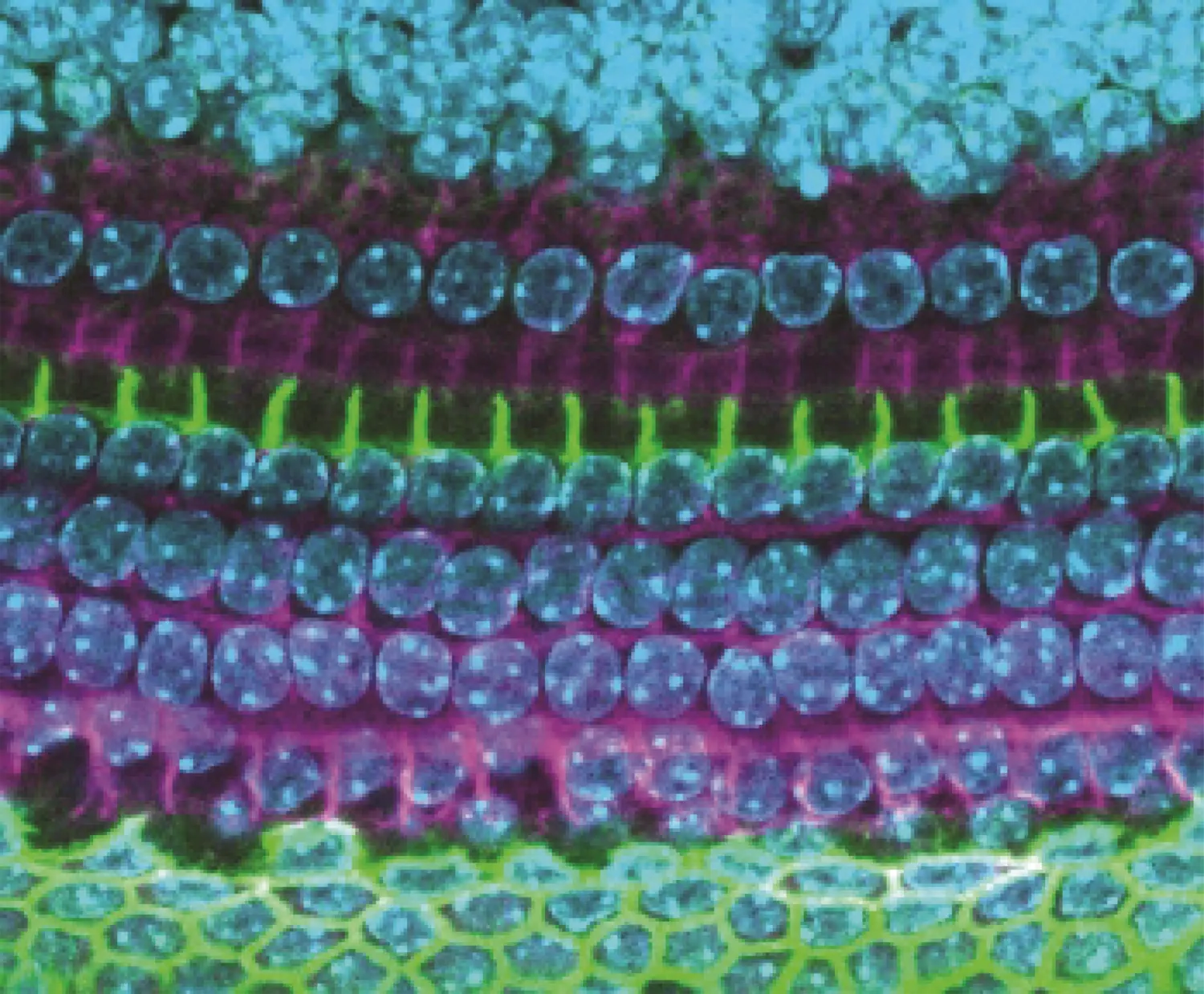2025-04-04 韓国基礎科学研究院(IBS)
<関連情報>
- https://www.ibs.re.kr/cop/bbs/BBSMSTR_000000000738/selectBoardArticle.do?nttId=25755&pageIndex=1&searchCnd=&searchWrd=
- https://www.science.org/doi/10.1126/science.ads4539
プロトンセンサーTRIM25による外因性RNAの監視 Exogenous RNA surveillance by proton-sensing TRIM25
Myeonghwan Kim, Youngjoon Pyo, Seong-In Hyun, Minseok Jeong, […], and V. Narry Kim
Science Published:4 Apr 2025
Editor’s summary
Recent advances have established messenger RNA (mRNA) as a transformative therapeutic tool, yet the mechanisms governing its cellular regulation remain poorly understood. Using genome-wide CRISPR screens, Kim et al. mapped the cellular pathways regulating lipid nanoparticle–encapsulated mRNAs. Heparan sulfate proteoglycans and vacuolar ATPase were identified as mediators of mRNA uptake and endosomal escape, respectively. The E3 ubiquitin/ISG15 ligase TRIM25 specifically targets RNAs entering cells through endocytosis, with its RNA-binding affinity enhanced in acidic environments, suggesting proton-sensing activation. N1-methylpseudouridine modifications in mRNA reduce interactions with TRIM25, mitigating the suppression of mRNA. These findings uncover a pH-dependent foreign RNA surveillance mechanism and offer insights for improving mRNA therapeutics design. —Di Jiang
Structured Abstract
INTRODUCTION
Exogenous RNAs, including therapeutic mRNAs and viral RNAs, must navigate cellular barriers and defenses to enter cells and synthesize proteins. Current clinical mRNA technologies use ionizable lipid nanoparticles (LNPs) to deliver in vitro–transcribed (IVT) mRNA with a 5′ cap, poly(A) tail, and N1-methylpseudouridine (m1Ψ) modification, which enhance protein production. The ionizable lipids in LNPs become positively charged upon endosome acidification, triggering endosomal rupture and releasing mRNA into the cytosol. These innovations have substantially improved transgene expression, establishing mRNA as a transformative therapeutic platform. Nevertheless, despite the broad applications of LNP-mRNA, the regulatory mechanisms remain poorly understood. A deeper understanding of the cellular processes governing the life cycle of exogenous RNAs is important for advancing mRNA therapeutics.
RATIONALE
To systematically identify cellular regulatory factors, we conducted a genome-wide CRISPR-Cas9 knockout screen. HCT116 cells were transduced with a single guide RNA (sgRNA) library and subsequently transfected with mRNAs encoding enhanced green fluorescent protein (EGFP). The IVT mRNAs were synthesized with or without m1Ψ to determine how this modification enhances protein output. We also performed a counterscreen using a cell line stably expressing EGFP to distinguish factors that regulate endogenous versus exogenous mRNAs. Fluorescence-activated cell sorting was used to isolate cells displaying the lowest and highest fluorescence, and the enriched sgRNAs were sequenced to identify positive and negative regulators, respectively.
RESULTS
From the screens using IVT mRNAs, we found positive regulators including genes involved in heparan sulfate proteoglycan (HSPG) synthesis, vesicular transport, and vacuolar adenosine triphosphatase (V-ATPase) subunits. HSPGs are cell surface glycoproteins with covalently attached heparan sulfate chains. Interfering with HSPGs reduced mRNA internalization, indicating their role in LNP uptake. V-ATPase is a proton pump that acidifies endosomes. Depletion or inhibition of V-ATPase blocks endosomal escape of LNP-mRNA.
Our screen also identified TRIM25—an RNA binding E3 ubiquitin ligase—as a key cytosolic suppressor. Knockout or knockdown of TRIM25 results in an increase of gene expression from LNP-mRNA. TRIM25 functions across multiple human and mouse cell types, indicating a widespread and conserved surveillance mechanism. TRIM25 acts by inducing RNA turnover without substantial impact on translation or deadenylation. TRIM25 down-regulates circular RNAs as well as linear RNAs, suggesting an endoribonucleolytic mechanism. We identified two endoribonucleases, N4BP1 and KHNYN containing the NYN domain, serving as decay factors along with zinc-finger antiviral protein (ZAP) in a TRIM25-dependent manner. m1Ψ reduces TRIM25’s RNA binding and ubiquitination activity, helping RNAs evade its suppressive effect. TRIM25 does not show specificity toward RNA sequence, cap structure, or poly(A) tail length. Instead, it specifically targets foreign RNAs delivered by acidified endosomes. TRIM25’s RNA binding affinity increases even at mildly acidic pH, suggesting activation by protons released from ruptured endosomes.
CONCLUSION
This study elucidates the cellular mechanisms regulating the delivery and stability of LNP-mRNAs by identifying HSPGs, V-ATPase, and TRIM25 as key factors. Our comprehensive mapping of cellular pathways offers insights into RNA immunity and therapeutics. m1Ψ reduces TRIM25’s RNA binding, mitigating TRIM25’s suppressive effect, which explains why m1Ψ effectively improves IVT mRNAs. Notably, TRIM25 specifically targets exogenous RNAs entering the cytosol through the endocytic pathway, with its RNA binding affinity escalating with even subtle pH changes. Our findings propose a model where TRIM25 is locally activated by protons released from acidified endosomes, enabling TRIM25 to selectively recognize nonself RNAs. This posits TRIM25 as a proton-sensing defender responsive to endosomal damage and implicates the role of protons as signaling entities.

Genome-wide screen identifies cellular regulators of exogenous RNA delivered by LNP.
Heparan sulfate facilitates cellular uptake. V-ATPase acidifies endosomal lumen, enabling endosomal escape. TRIM25, activated locally by protons from ruptured endosomes, captures RNA and induces RNA cleavage. Endoribonucleases N4BP1 and KHNYN, along with ZAP, redundantly mediate TRIM25-dependent RNA surveillance. m1Ψ modification helps RNA to evade TRIM25, increasing protein output.
Abstract
Exogenous messenger RNAs (mRNAs) require cellular machinery for delivery and translation but also encounter inhibitory factors. To investigate their regulation, we performed genome-wide CRISPR screens with in vitro–transcribed mRNAs in lipid nanoparticles (LNPs). Heparan sulfate proteoglycans (HSPGs) and vacuolar adenosine triphosphatase (V-ATPase) were identified as mediators of LNP uptake and endosomal escape, respectively. TRIM25—an RNA binding E3 ubiquitin ligase—emerged as a key suppressor inducing turnover of both linear and circular mRNAs. The endoribonucleases N4BP1 and KHNYN, along with the antiviral protein ZAP, act redundantly in TRIM25-dependent surveillance. TRIM25 specifically targets mRNAs delivered by endosomes, and its RNA affinity increases at acidic pH, suggesting activation by protons released from ruptured endosomes. N1-methylpseudouridine modification reduces TRIM25’s RNA binding, helping RNAs evade its suppressive effect. This study comprehensively maps cellular pathways regulating LNP-mRNAs, offering insights into RNA immunity and therapeutics.


